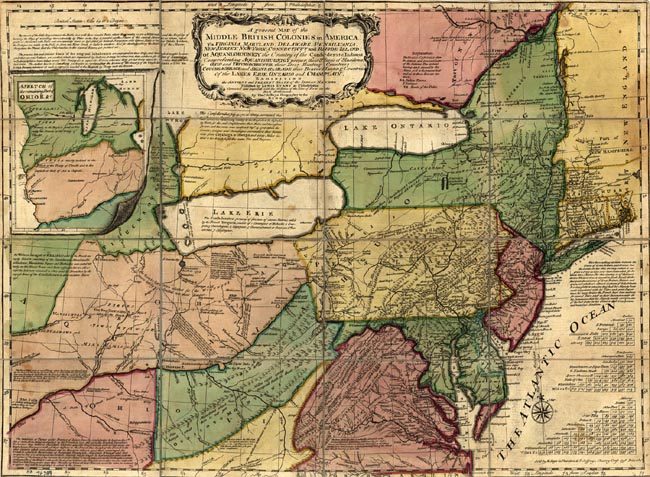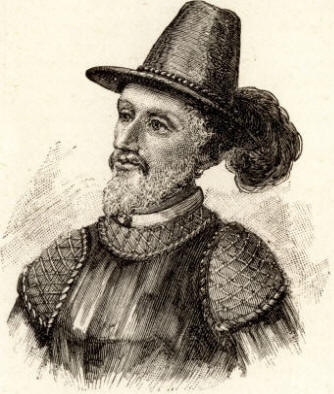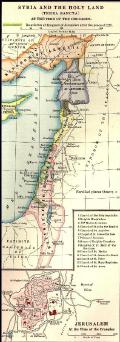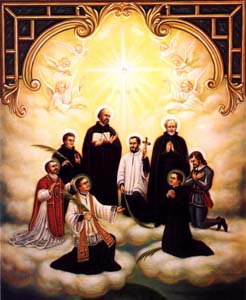My girls are both using Catholic Heritage Curricula this year, and I really like their history programs. Each are writing summaries of the things they are learning about, and they are both researching in the library and in our nifty new encyclopedia set. (I bought the 2000 edition of the World Book Encyclopedia, minus a couple of books, for $5 at our local branch.) Between the World Book and Maureen Wittmann's resource, I'm doing well in getting books for them to read.
*********************
In the first quarter of fourth grade, Little Girl is researching our home state of Virginia. Each week she writes a little more about the state. So far, she's done three essays on the things she's learned. I have helped a bit with structure, and this week I helped a bit with sorting out the precious little (and slightly confusing) information we could find about early missionaries in Virginia. But by and large, she has written these essays on her own. She's occasionally asked for help in creating a decent sentence out of her new knowledge, and I have, naturally, made some corrections. These are all normal for her age. (Any notes within their essays, I have included as smaller text in italics.)
Here are her three essays that she's done so far on Virginia:
I. Virginia
The first people that lived in Virginia lived here in the fifteen-thousand BC, they lived here till the beginning of the sexteen-hundreds. At least, that's what the scientists say, they actually could have lived here longer, or shorter. By about 1200 BC the woodland culture began. Now, a chief or head-man would lead a village. ARound that time they learned to dig up clay from the wet riverbank to make what archaeologists call woodland pottery. Later on, people from England came to Virginia and made a settlement called Jamestown.
In his early tweties, John Smith traveled all over the middle east and Europe. He sailed across the Atliantic Ocean and ended upin Virginia. He named the town he found Jamestown. When more people, later on, lived in Jamestown, there was more farming done. But, the farmers did not do the sowing, the watering, the weeding, or any other important gardening things. They had slaves that did the work for them instead of doing the work themselves. The people that lived in Virginia had slaves for a long time, until Abraham Lincoln made a new law that made slavery illegal. Virginia has a nickname, like other states, and Virginia's nickname is "The Old Dominion." It was made a state in 1776, and the state flower is the Dogwood. The state tree is the flowering dogwood.
(You can see here that I didn't do a lot of correcting and adjusting. I wanted her to feel good about finishing her first really big research project. We talked about ways to improve it the next time, but I mostly left this one alone.)

II. Virginia Part II (How Virginia Became a State)
Before Virginia became a state, the British ruled the thirteen colonies. A group of people gathered together and discussed independence because they did not like being ruled by a king. Some of the people were Benjamin Franklin, Thomas Jefferson, and John Adams. The committee wanted someone to write a Declaration of Independence. Thomas Jefferson was the one instructed to write it. He began his work on June 11th 1776. After finishing his final draft, the other people in the committee edited it and gave it to congress on June 28th. On July 2nd, congress voted for independence before releasing it to the public on July 4th, or, Independence Day.
In 1882, John Adams wrote a letter to Timothy Pickering that, at the beginning, read:
"You inquire why so young a man as Jefferson was placed at the head of the committee for preparing a declaration of independence? I answer: It was the frankfort advice to place Virginia at the head of everything."
III. Taking a Look at Virginia's Early Missionaries (You see here that her title has even improved! I didn't even mention this to her, but she might have picked it up from my lessons with her sister.)
In 1526, Dominican friar Antonio de Montesinos said mass near the future Jamestown. Friar Antonio also brought back Indians to Spain. One of the Indians was later baptized as Don Luis de Velasco. Later, in 1570, Don Luis de Velasco helped two priest and their companions on a mission to Axacon. The priests were named Fr. Segura and Fr. Luis de Quiro. Their trip was not just them but seven other Jesuits and three Indian boys. That means there were thirteen all together on the mission. The priests and their companions landed and fortunately got a warm welcome. They later built a log chapel and started a mission with the help of Don Luis. Unfortunately, Don Luis betrayed them and helped the nearby Indians kill everyone in the mission but one Indian boy. After that, missions stopped until Virginia became a colony. Maryland was a colony at the same time as Virginia, but it was especially for Catholics. People in Maryland supported new missions in Virginia, because it wasn't a good place for Catholics until 1786, when Thomas Jefferson wrote a statues allowing Catholics to be free in worship. Many years later, on July eleventh, 1820, Pope Pius VII created the Richmond Diocese.
(I admit that I think I corrected, while typing, a couple of spelling errors. I think she wrote "compainions" and "fortunally" in there. But she did spell out the numbers as I typed them!)
The next set of writing she'll do is about the states Catholic shrines and/or missions. Might be interesting since our parish itself was a mission parish at one point! In fact, because Catholics comprise such a small part of the population in Virginia, this is actually still considered mission territory! What will also be nice is that in October we'll be at the Basilica of the Shrine of the Immaculate Conception in Washington, D.C.
*********************
Big Girl has a different task this year. Though she, too, is studying American history, hers is much more in depth - as it should be for a seventh grader! Every week she has a new set of topics to research, and she writes not only a summary of the topic, but she also writes shorter essays on sub-topics that relate to the main one!
Her first week was about Indians in North America. She read in Christ and the Americas about the Aztecs and wanted to learn more about them. Here are her three essays from the first week of history:
The Aztecs
The Aztecs were an interesting culture. They had different habits than we do now. The women stayed home and cleaned, while the men gathered the crops, or worked in the fields. Women's clothes were a sleeveless blouse, with a skirt, while men wore only a loincloth & a tilma.
In battle, the Aztecs fought to capture, not to kill. While fighting Aztecs would only midly wound their enemy, then take them as prisoners. Later, they would sacrifice the prisoners.
As for religion, the Aztecs were very gory, because they would cut the heart out of a living man, then throw the body in a ditch. There were many Aztec gods, mostly gods of harvest & of plants. They made sacrifices almost every day.
Mostly, the Aztecs ate tortillas with vegetables. However, they also ate mean, and drand chocolate drinks. They also raised dogs & turkeys for food.
So, the Aztecs were different, but not all in a bad way. To them, we would be weird, too. After the Spanish Conquest, the Aztecs died out. However, we know they were an interesting race, and that they were brave & strong.
The Aztec Gods

The Aztecs thought highly of their gods. There were sacrifices almost every day. Over 100 people died each sacrifice. This cut down the population greatly. The Aztecs thought if they didn't sacrifice, the sun wouldn't rise the next day. There were many gods, many of which had to do with nature. The gods were worshipped until Cortez arrived. The Aztecs built HUGE stone monuments to the gods the size of cathedrals! Once a sacrifice took place for 4 days and 4 nights! 80,000 men died that night. The priests would cut out a victim's hear, place the heart in a statue of a god's mouth, and throw the body in a ditch.
Hernando Cortes
Hernando Cortes was sailing to mexico. When he got there, he found the Aztec Civilization. The emperor, Montezuma II, feared he was a god, &, having had a bad treatment in the past, came back to avenge himself. The year was 1519. Cortes had actually come for wealth and riches. Though he arrived on Good Friday, he was battling the Aztecs by the end of the year. The Aztecs, after they found out he wasn't a god, were angered because he wouldn't leave.
The first battle raged, then both sides, Spaniards and Aztecs backed away. The fights continued for over a year, until the Spaniards prevailed. But it still took a lot to win. Cortes even took Montezuma II hostage for a time. Later, however, Montezuma II died of battle wounds. So in Tenochtitlan, future Mexico City, the Spaniards defeated the Aztecs. He ended the brutal sacrifices. And, he is now remembered throughout history.
The second week brought us to the Vikings: first explorers of the New World. Notice how she has gotten the hang of grabbing your attention with a title and the opening lines.
Let's Go A-Viking!
Vikings were not like Haagar the Horrible. Nor were they like the Minnesota Vikings. Many of the presumptions we have about Vikings are incorrect. First of all, they did not have horns on their helmets. And, though barbaric at times, the Vikings had a softer side: family life.
The Vikings usually had arranged marriages, but women had more rights than women of other cultures at the time. They had a right to money, land, and could divorce their husband whenever they wanted.
The main occupation of a Viking was farming. They grew barley, oats, rye, fruits and vegetables. They raised cattle, goats, pigs, sheep, and were even fishermen!
For recreation, they liked rowing, swimming, skiing, wrestling, and horse races.
The Vikings liked poetry, so that's why we have sagas. They also painted and crafted boats.

As for religion, Vikings were polytheists, but there were 3 main gods: Odin, king of the gods; Freya, goddess of agriculture; and Thor, god of war. The Vikings also had Valhalla, life after death, where you could fight all day and feast all night. Later, Lief Ericsson led them to start to convert to Christianity.
Vikings came from many places. They came from Sweden Denmark, and Norway. They Swedes invaded Western Russia, Eastern Belarus, and Eastern Ukraine. The Danish invaded France, the Netherlands, and parts of England. The Norwegians invaded England, Ireland, Scotland, the Isle of Man, and Lindisfarne. The Vikings also helped unify France and England.
The Vikings first used Latitude and Longitude, and also discovered Greenland and Vinland, now called North America.
In spite of what popular culture says, Vikings were not all about fighting. They cared about family and harvest too. People think all they did was pillage and burn villages, but the Vikings also wrote poetry, painted, and made ships, which they considered art. Even today, we use their invention, Latitude and Longitude.
Leif Ericsson
Leif Ericsson was a Viking. He was the son of Eric the Red, who found Greenland. Leif was born around the year 980, in Iceland. Around 985, Leif's family sailed to Greenland. Around 999, Leif went back to Iceland, then to Norway, where he became a Christian. Leif then traveled around his father's tribe, preaching Christianity. In the year 1000, Leif sailed to a land that another had seen while sailing around. When he got there, he built a house for each of his men, a shed for their ships, and cut logs to bring back to Greenland where wood was scarce. On the way back, he rescued 15 men, who, in thanks, gave Leif their cargo which made Leif rich.
Eric the Red
Eric the Red was the Viking who found Greenland. When he was 10, his father was outlawed for manslaughter. Eric moved with his father to Iceland from Norway. After his father died, Eric killed several people & was exiled for 3 years. He then found Greenland, & persuaded others to come to this new land with him. His son Leif, in later years, found Vinland. Eric, after a fall off his horse, feared bad luch & stayed in Greenland until his death around 1000.
This week's topic is being spread out. Since our family is taking a trip and we'll have two short weeks, I split her work between those two weeks. Our topic this week and next is the Spanish exploration of the New World, as well as saints like Blessed Juniperro Serra. Here is her essay on the book she read about Ponce de Leon:
Ponce de Leon: The Man Who Found Florida
The year was 1513. Juan Ponce de Leon was on the deck of his ship when he heard a shout. "Tierra!" a sailor cried. "Land!" Juan looked and saw a thing, black line on the horizon.

Now, before you read more, here's some information on Ponce de Leon. He was a Spanish knight who fought the Moors. he went with Columbus on his 2nd journey to the New World. There, he fought Indians. Later, he went back and found a peninsula which he named la Florida, or the Land of Flowers.
Juan decided to tell King Ferdinand and Queen Isabel of this new land. After he told the king and queen, he went to Hispanola, where he was attacked by Indians. Wounded in battle, he retreated, but later died of his wounds. Juan inspired many others to explore Florida, including Panfilo de Narvaez and Hernando de Soto.
Juan Ponce de Leon will always be known as the man who found Florida.
§§§§§§§§§§§§§§§§§§§§§§§§§§§§§
I'll do my best to post more of their writing throughout the year.
Related:
- Something to be Proud Of (or "Why I Use Catholic-Based History and Science Curriculum")








